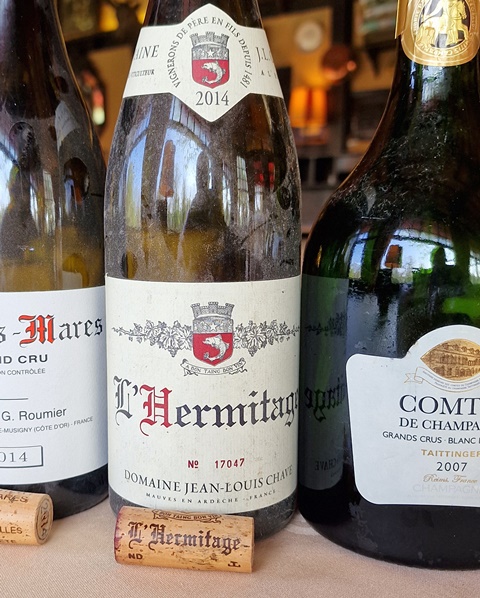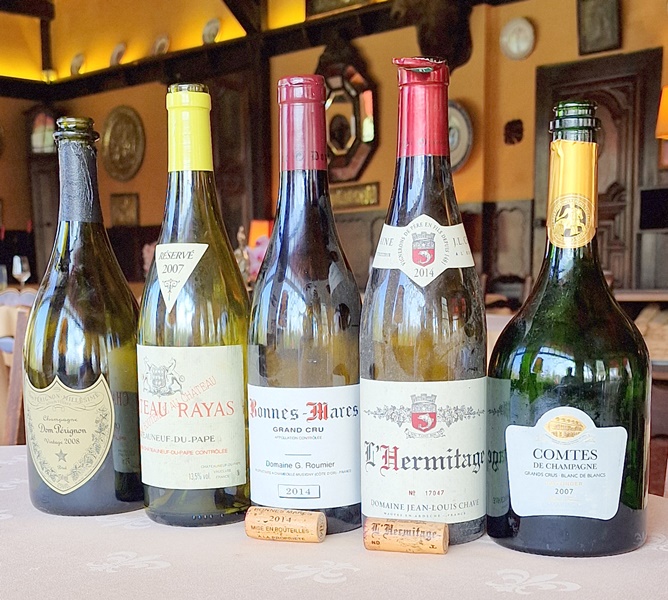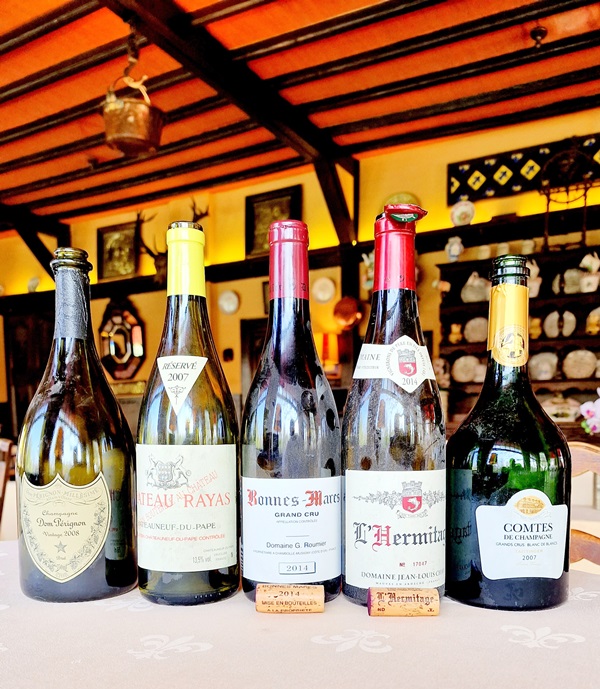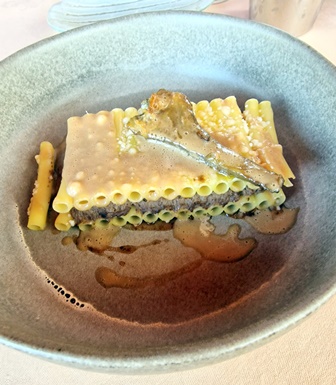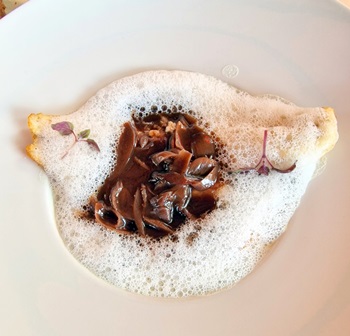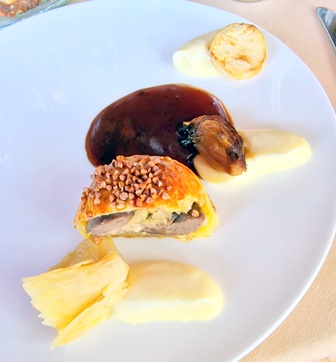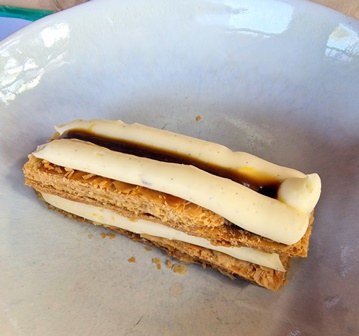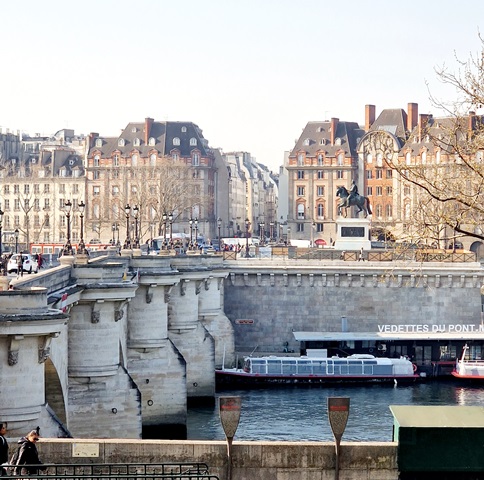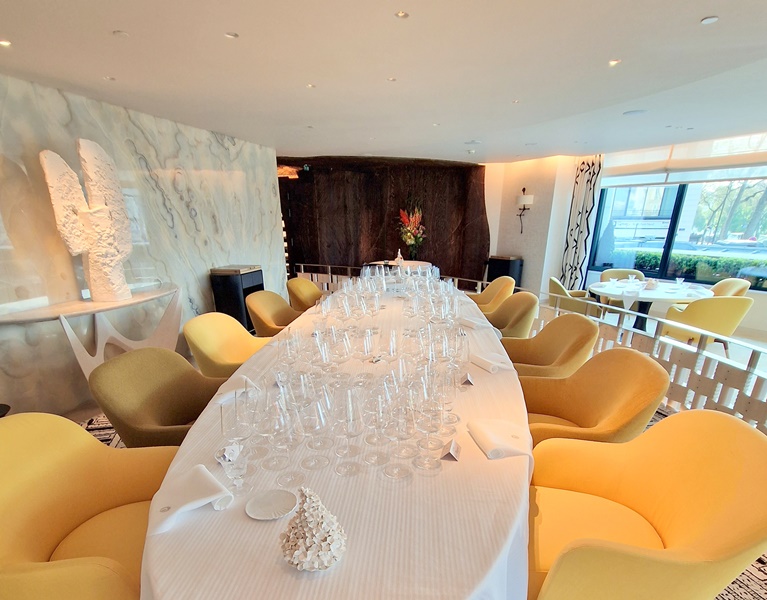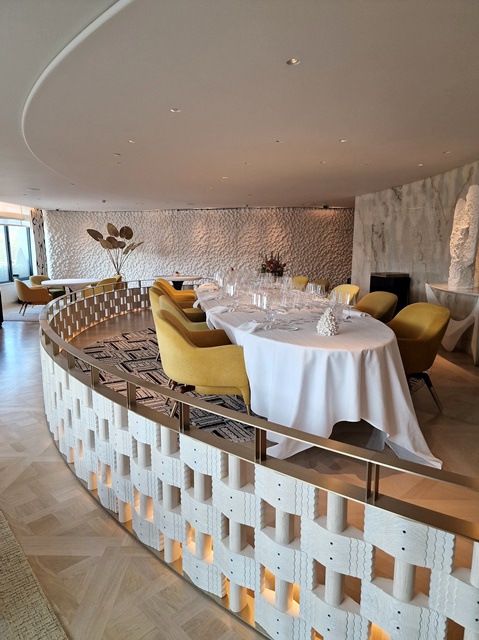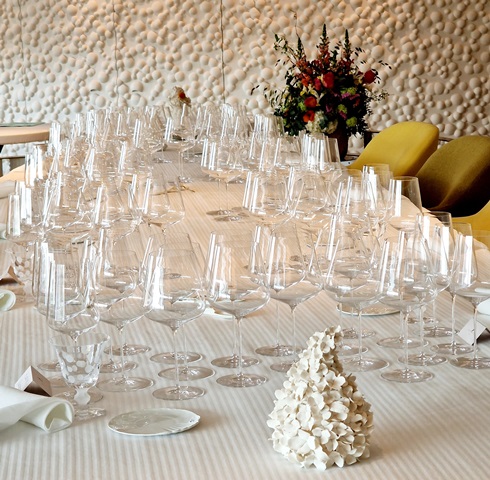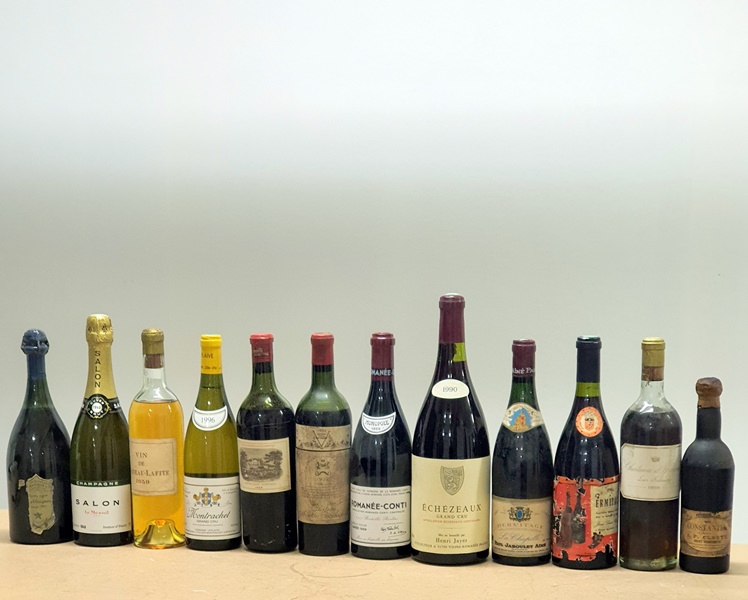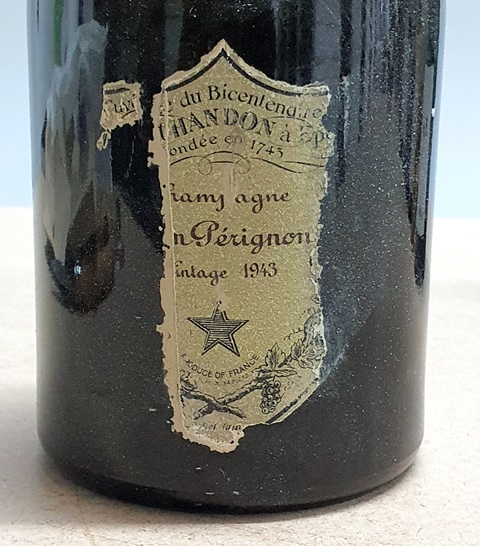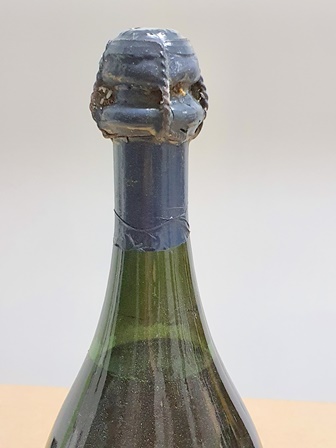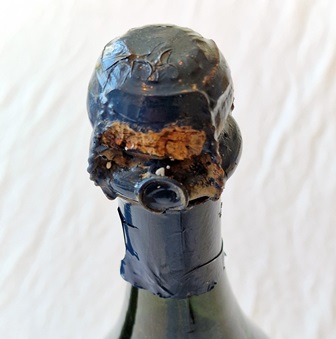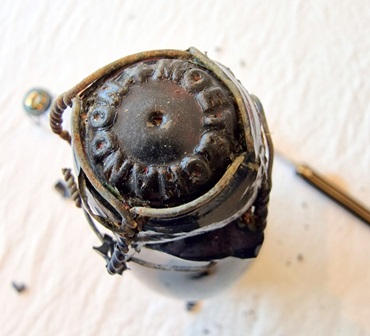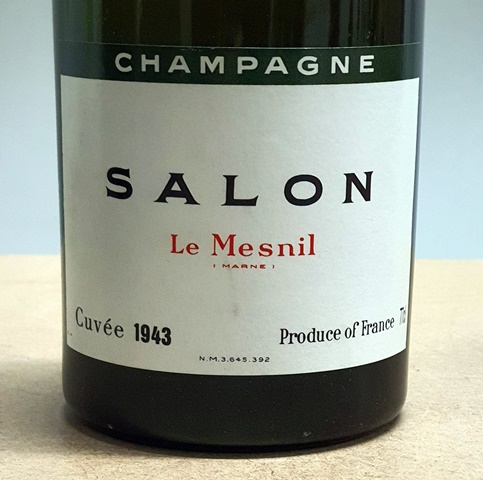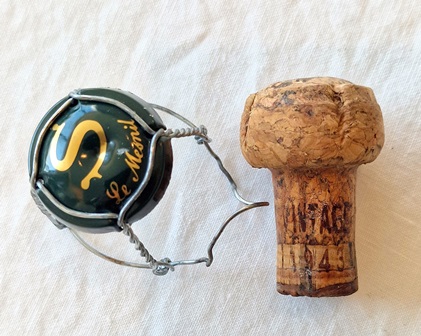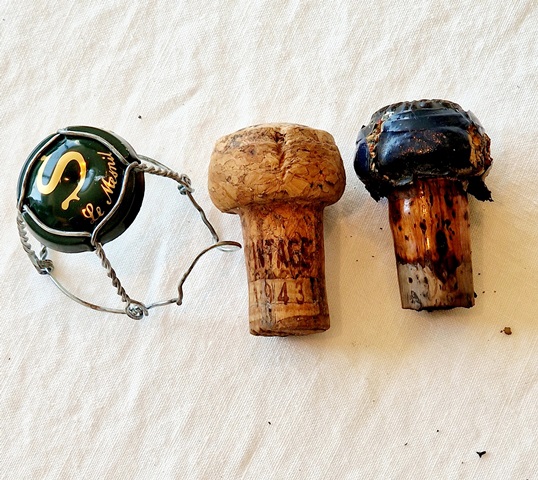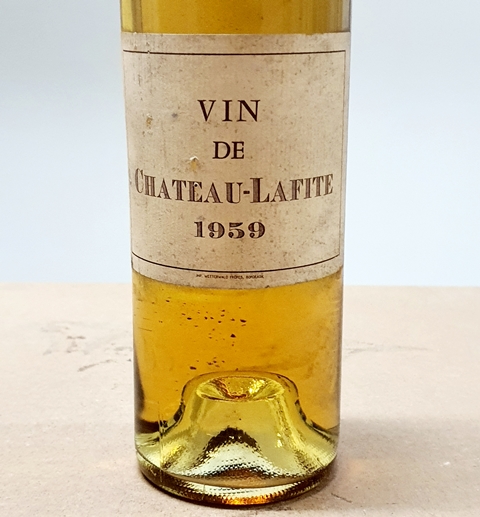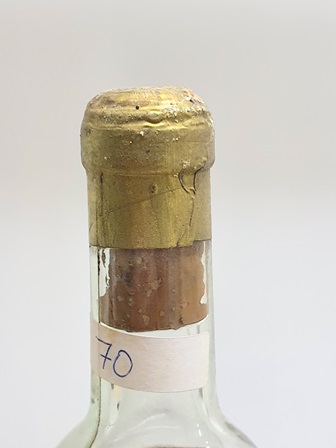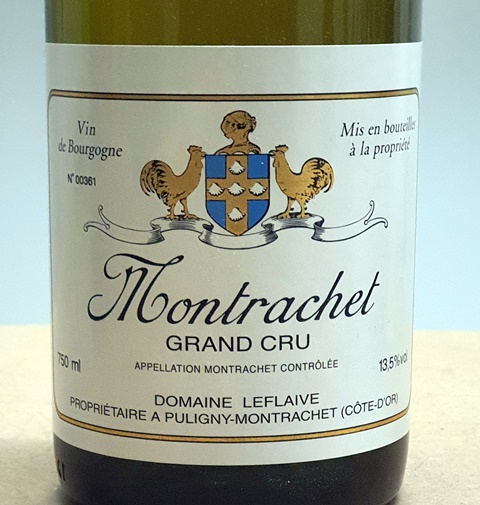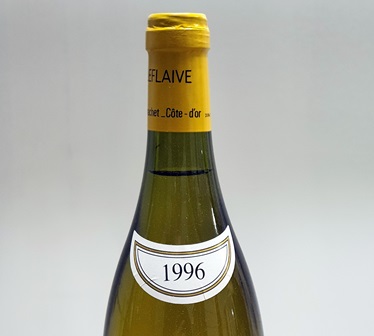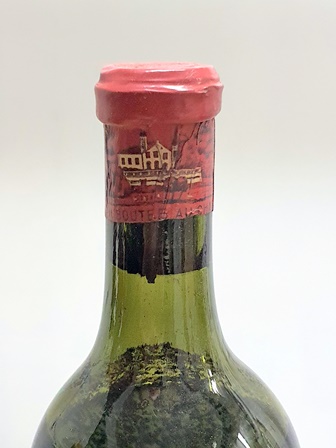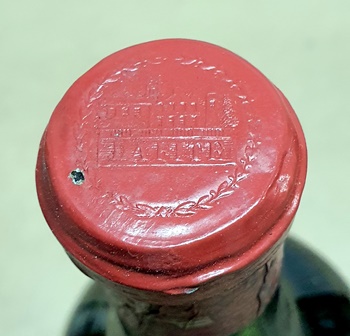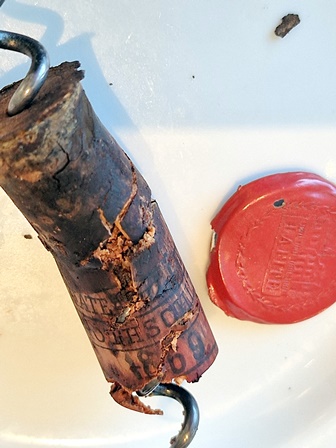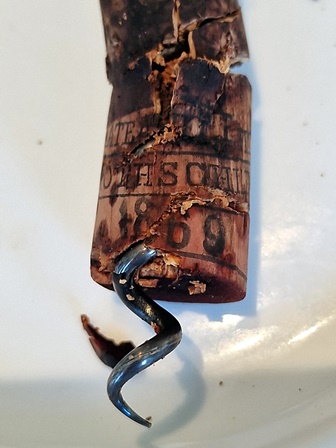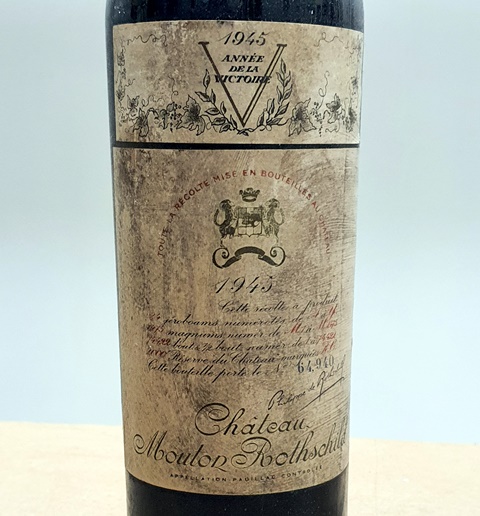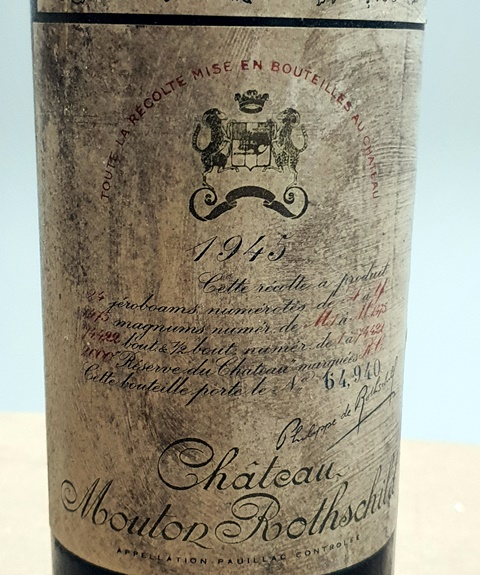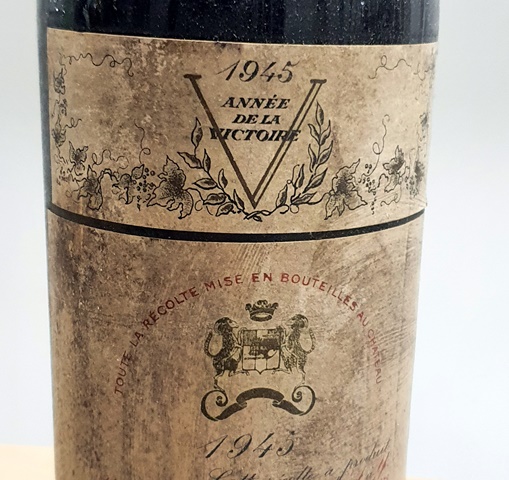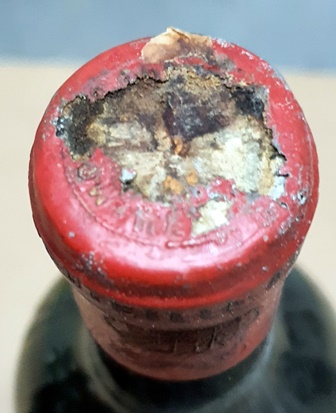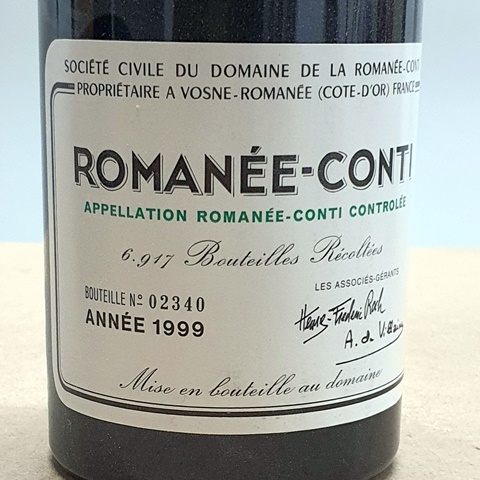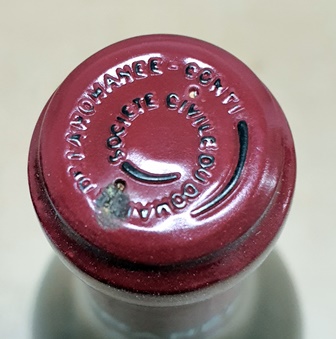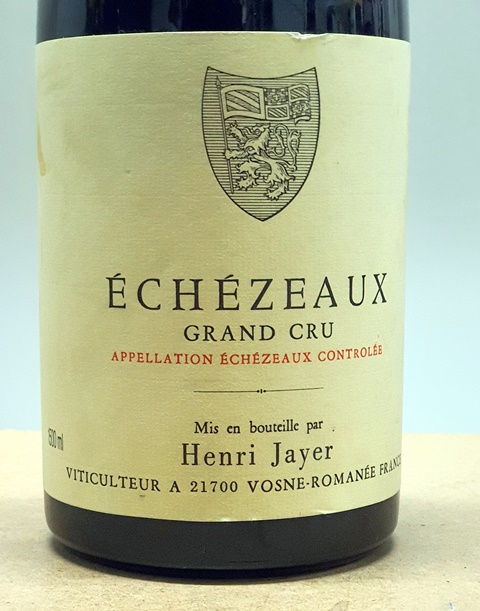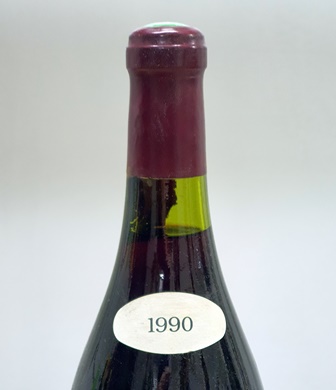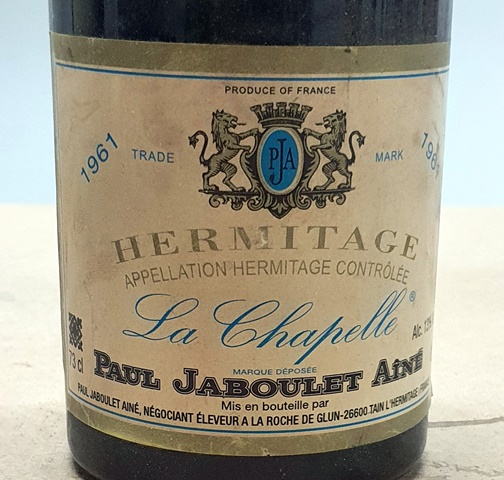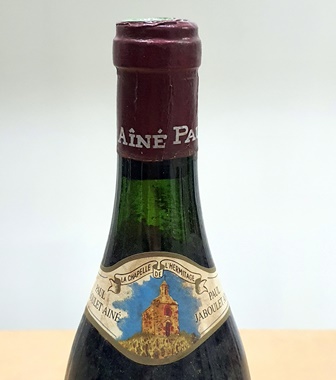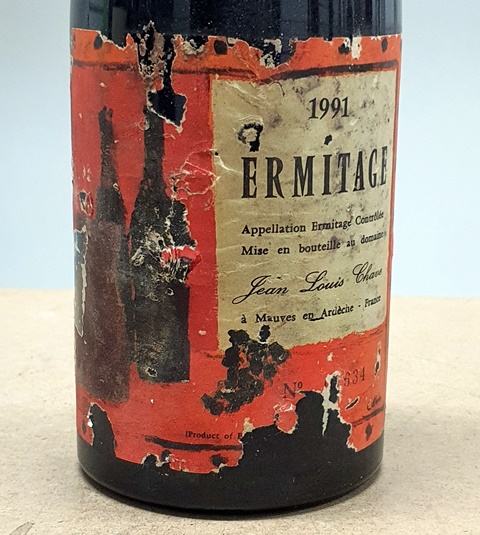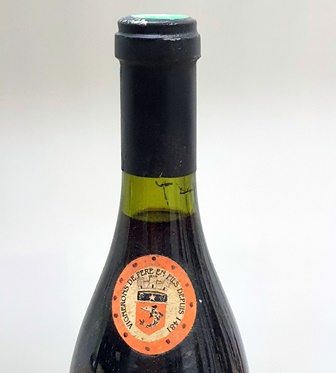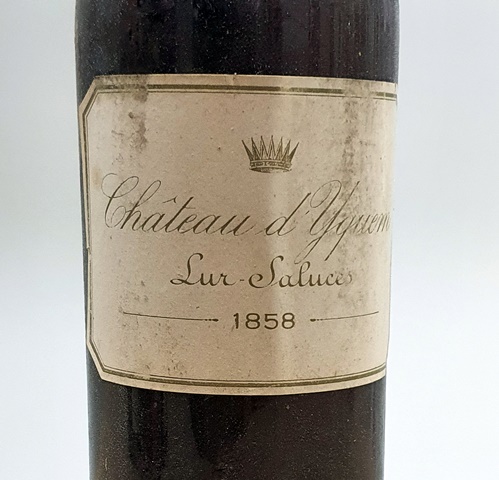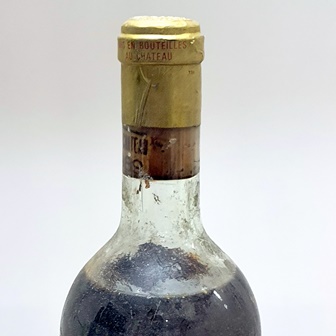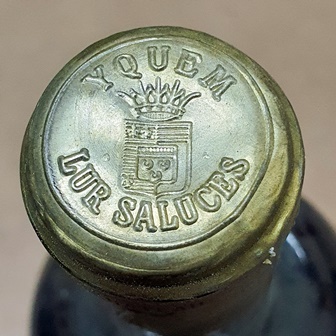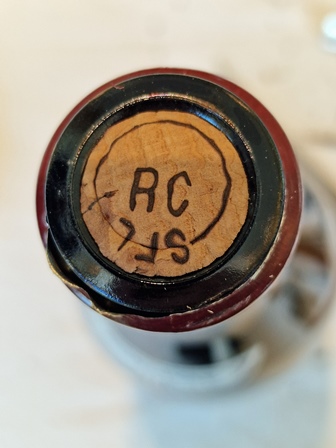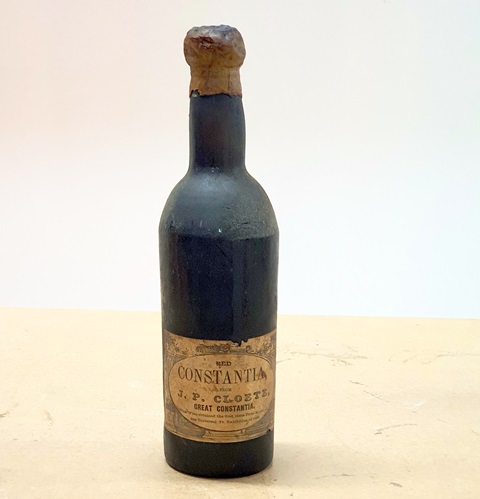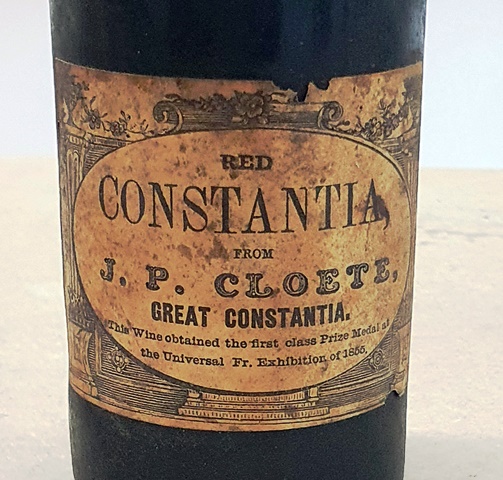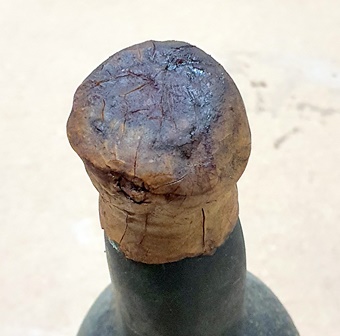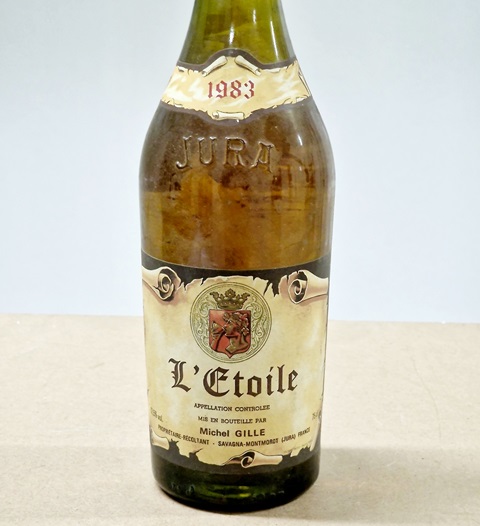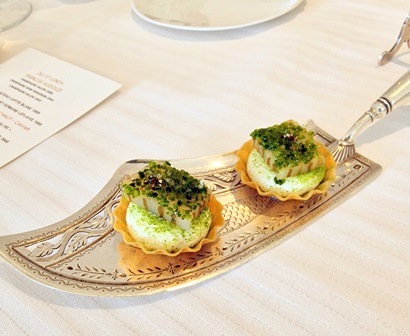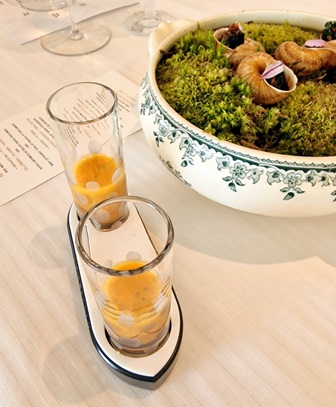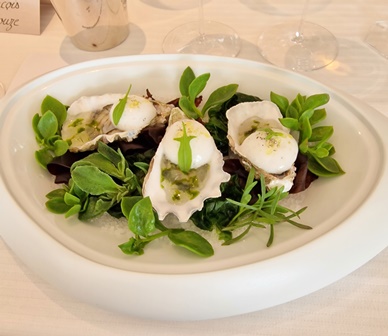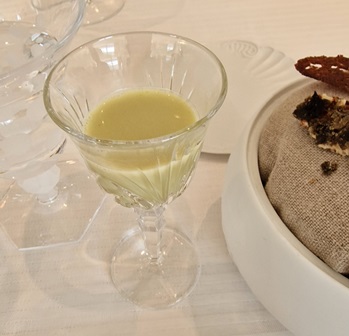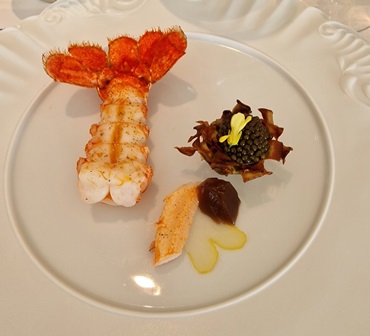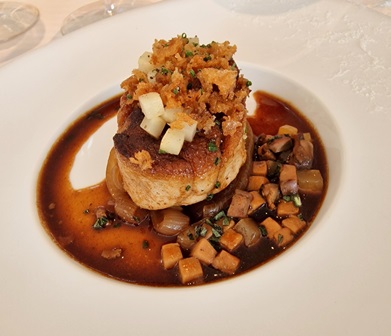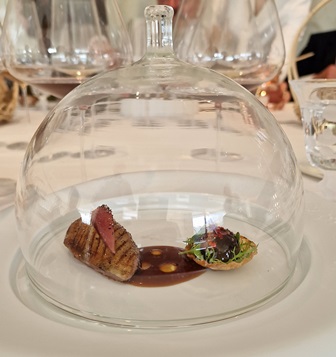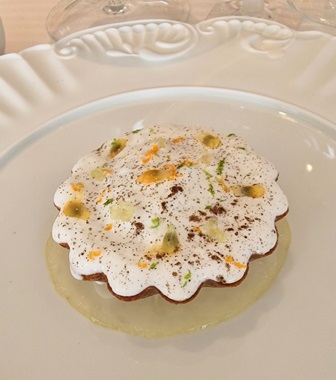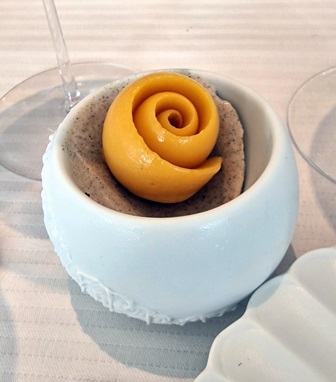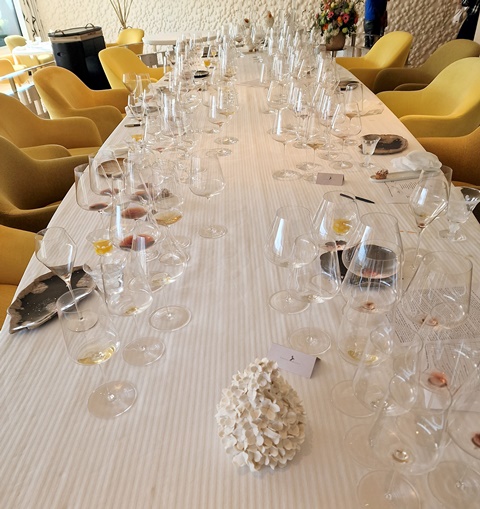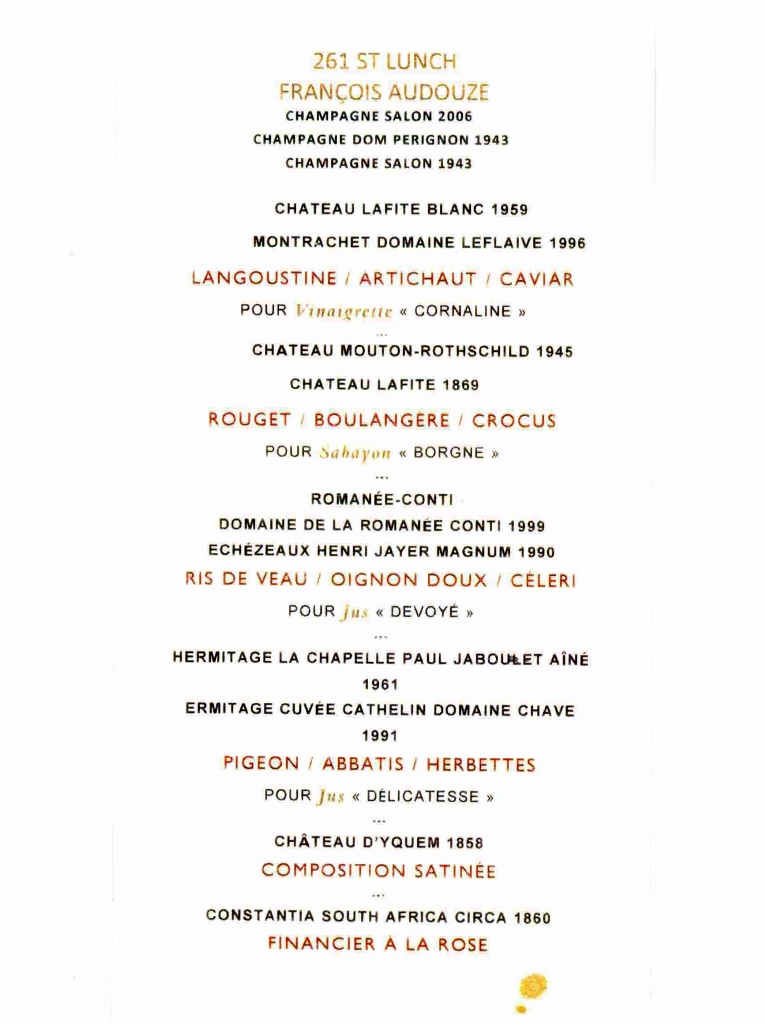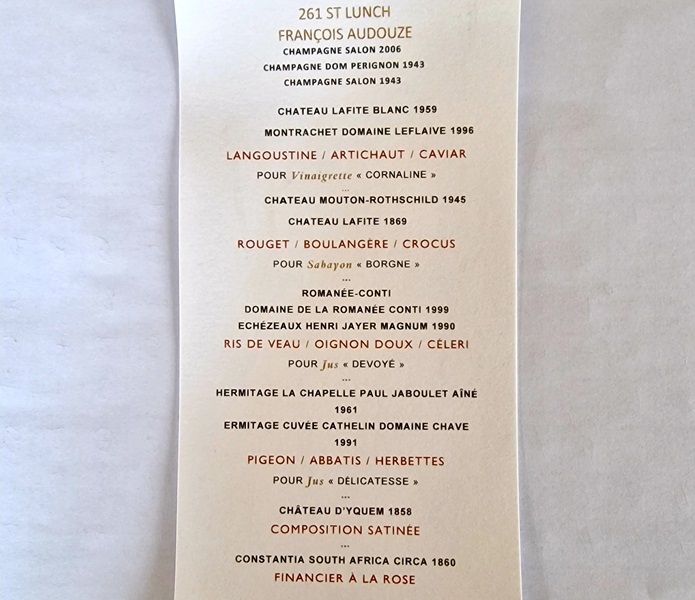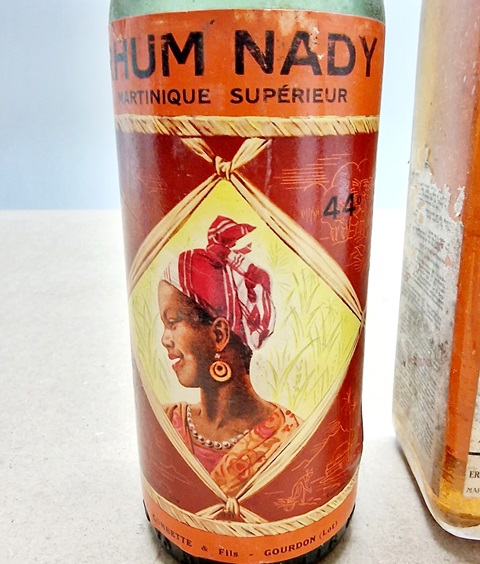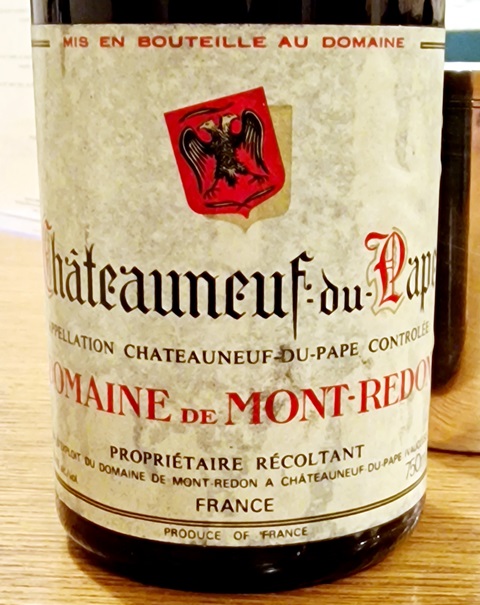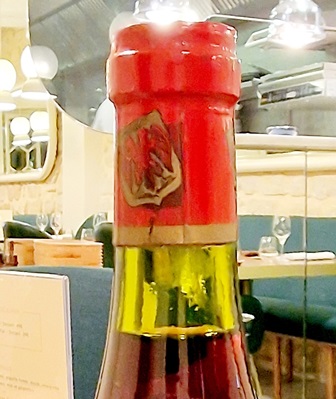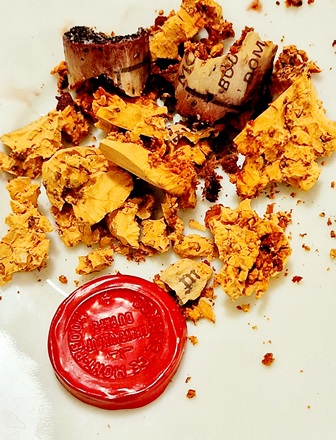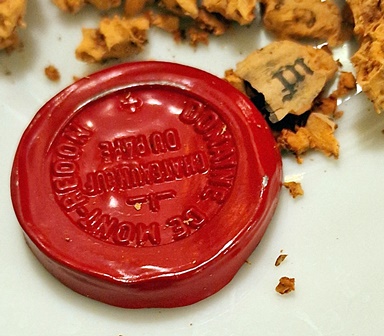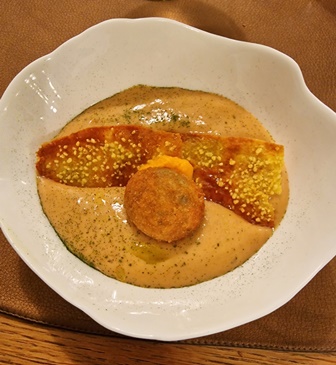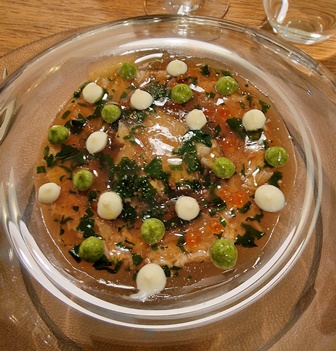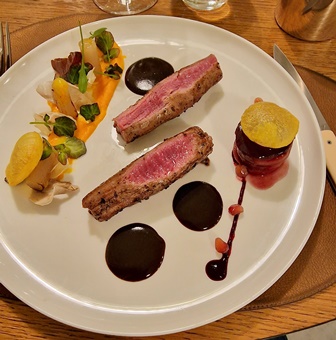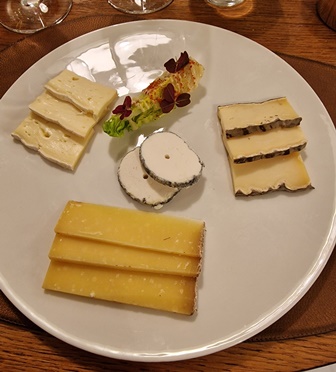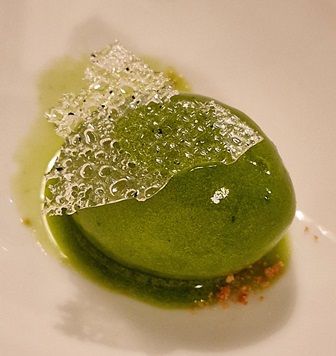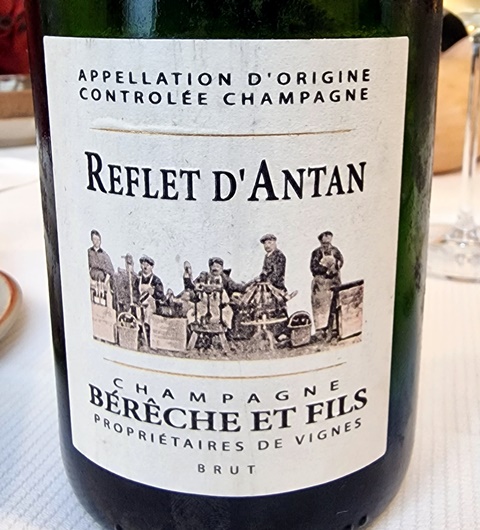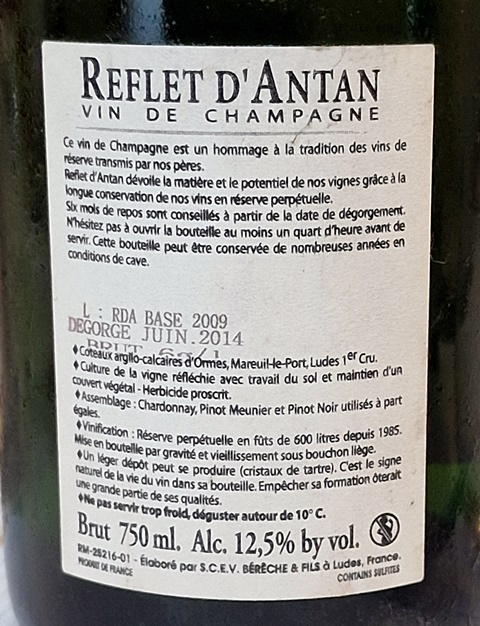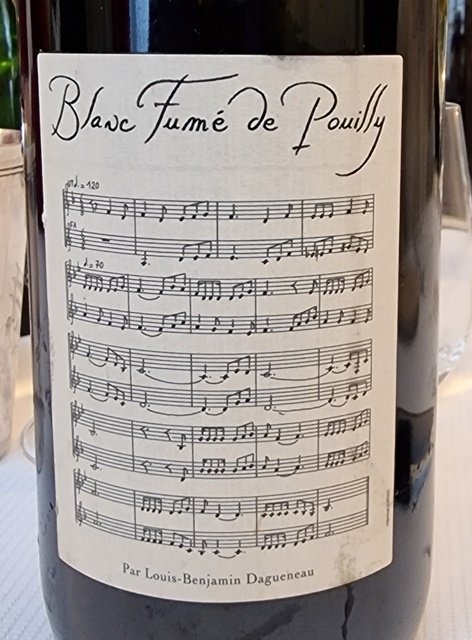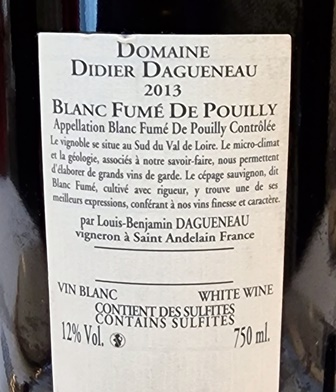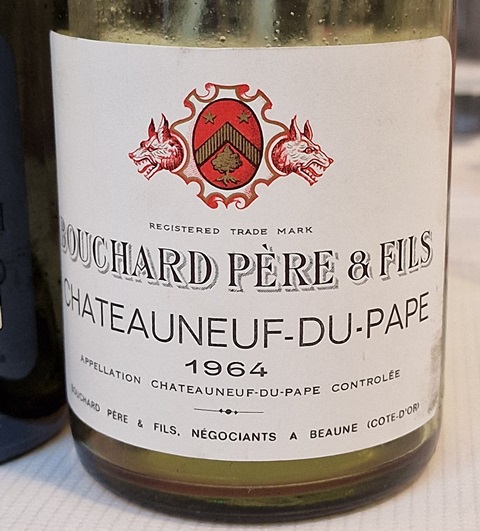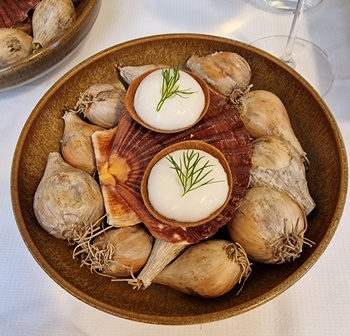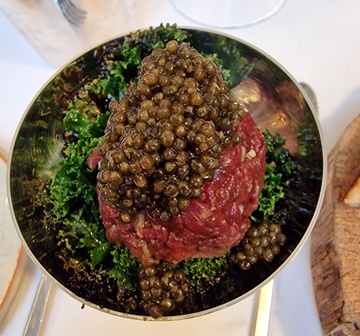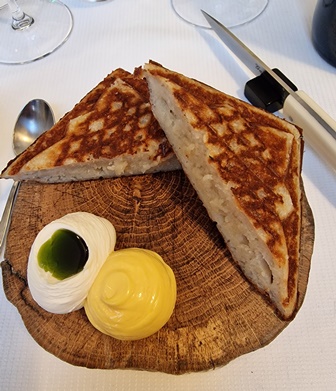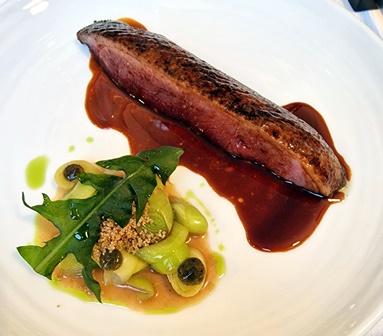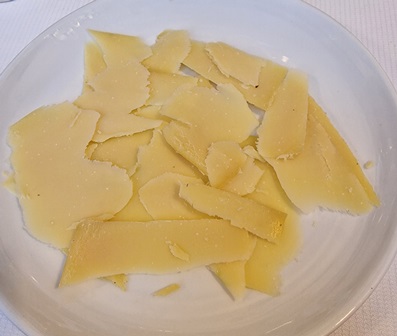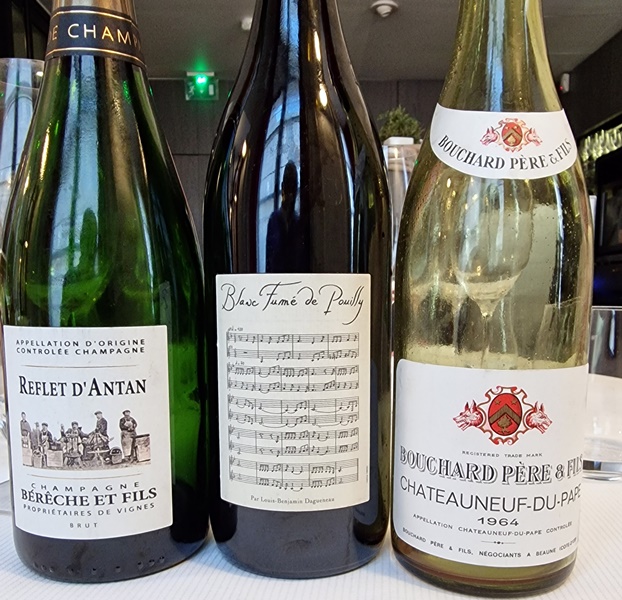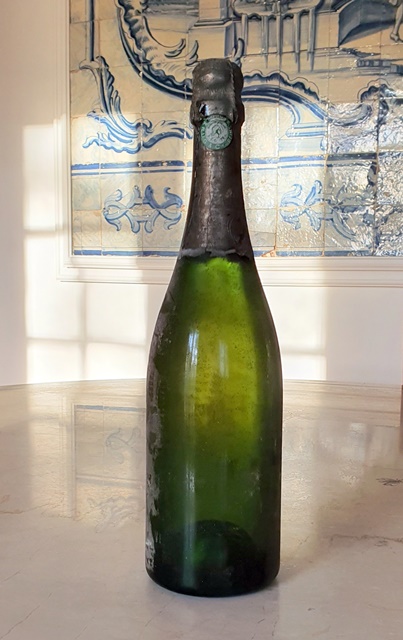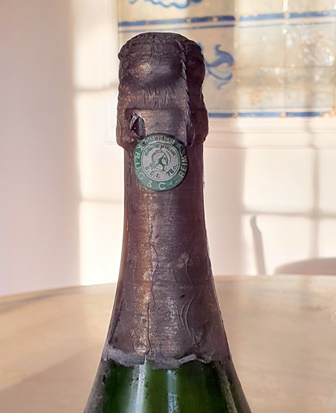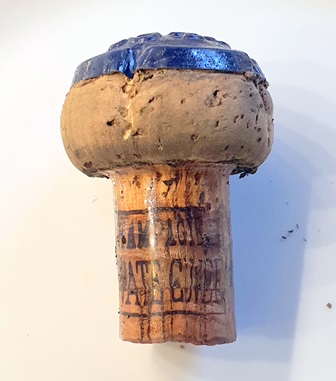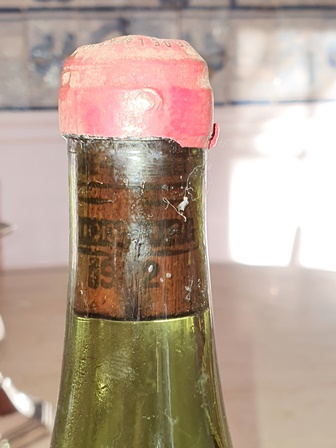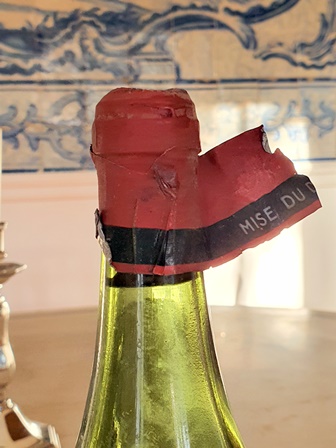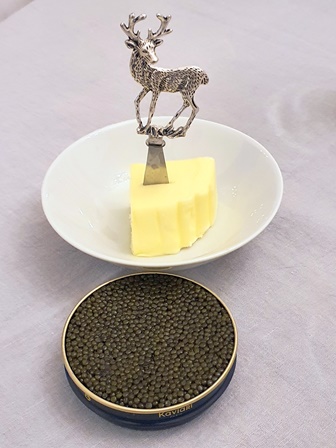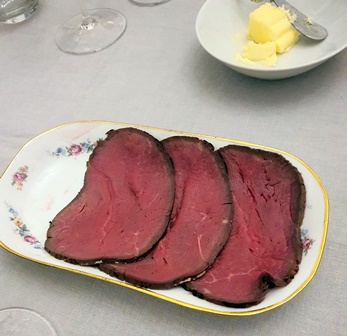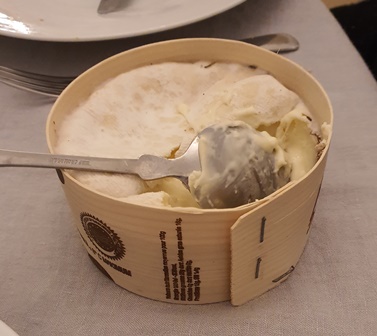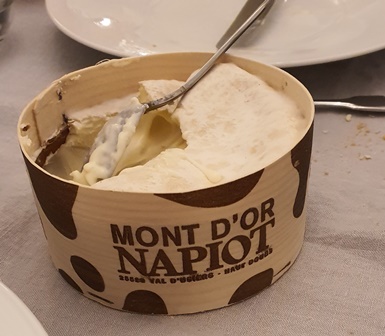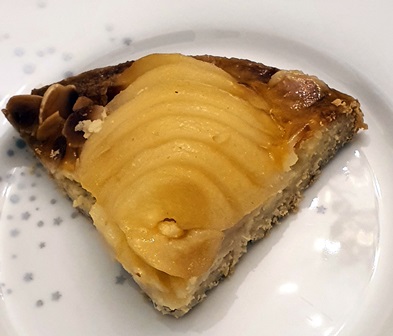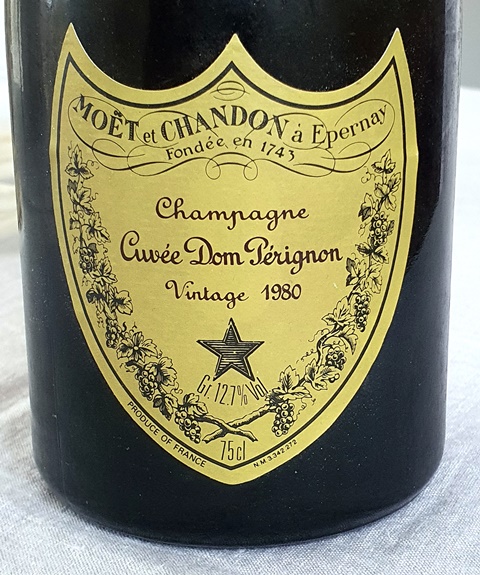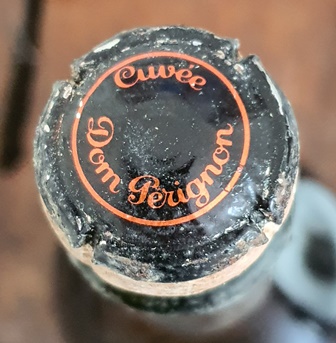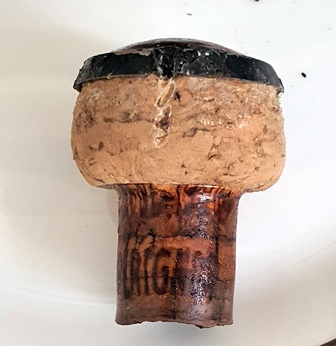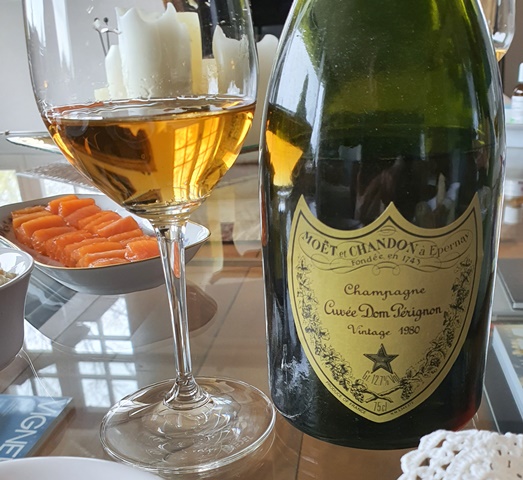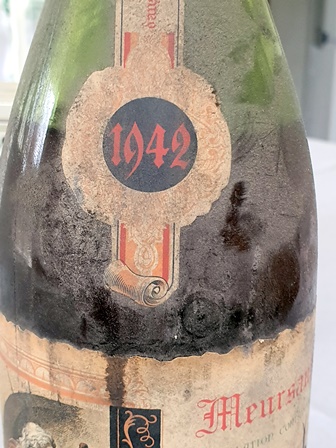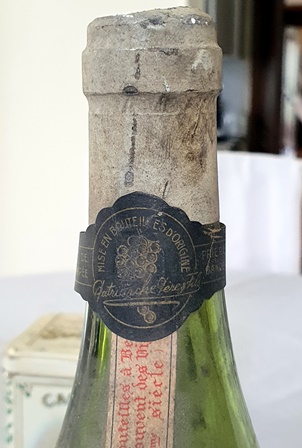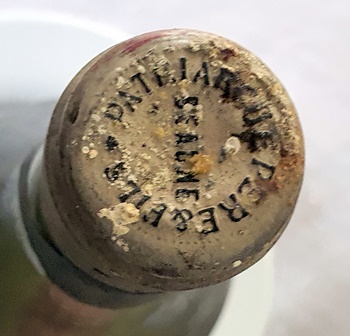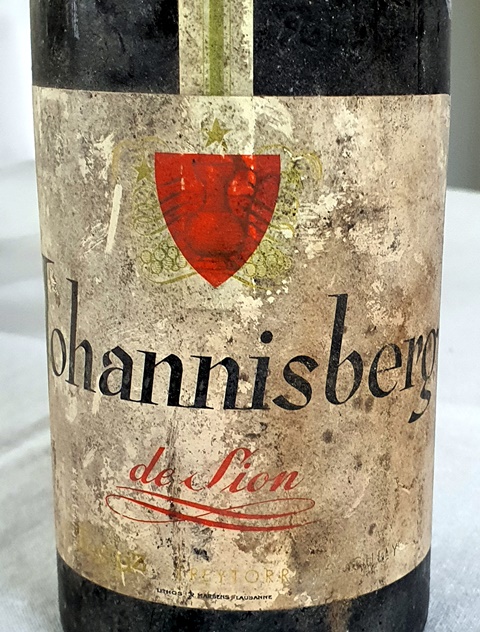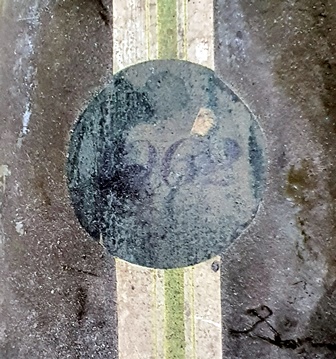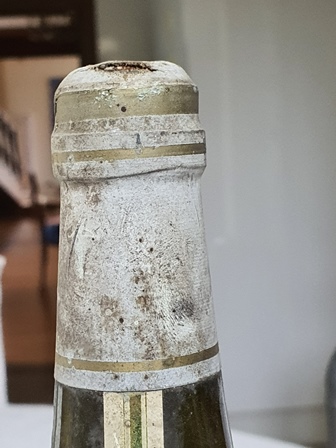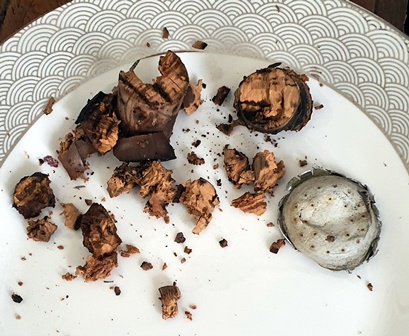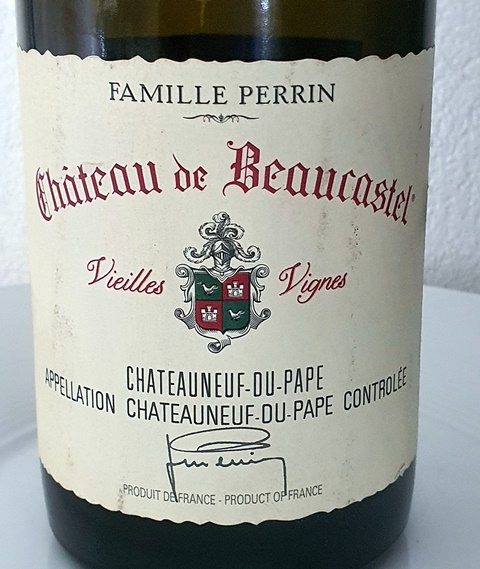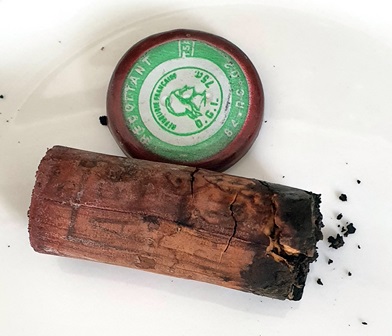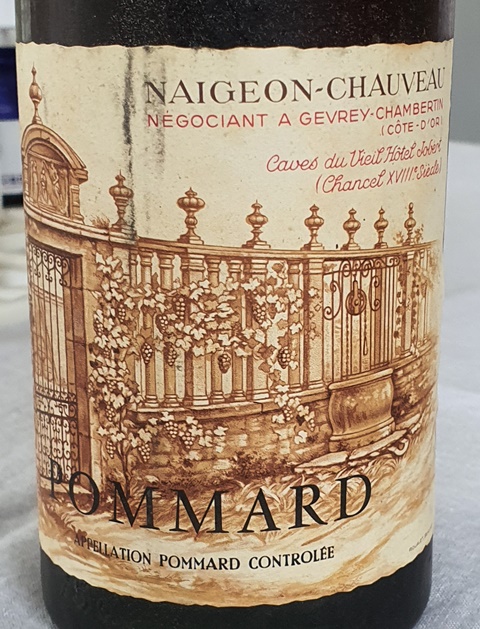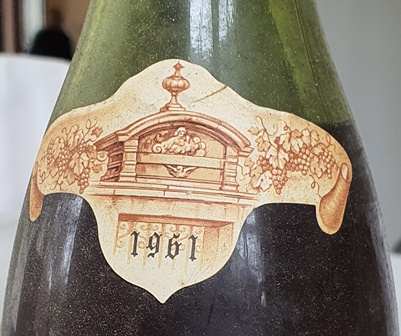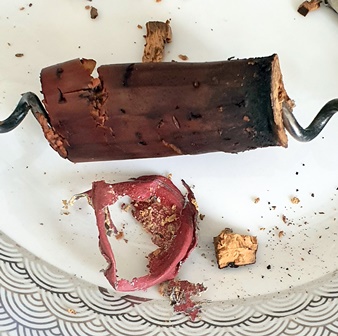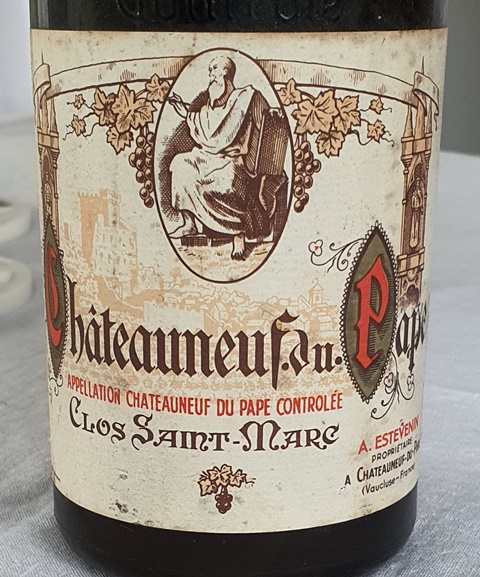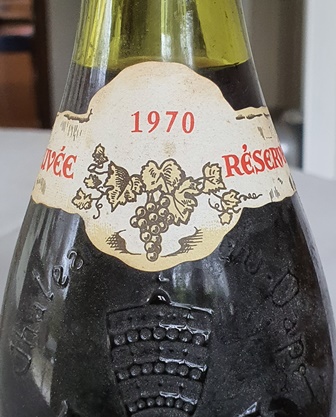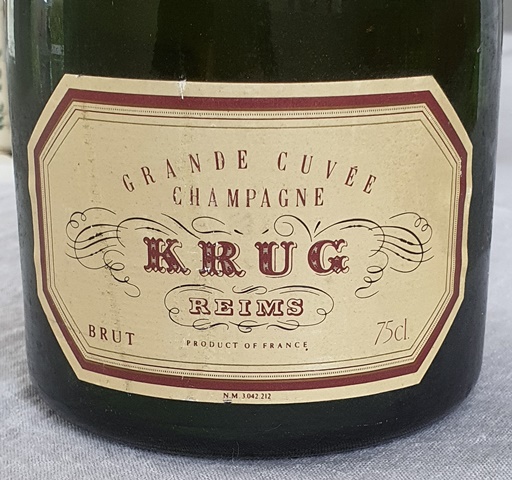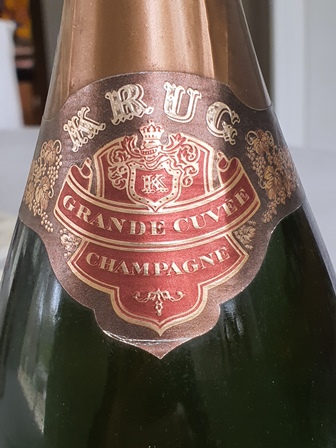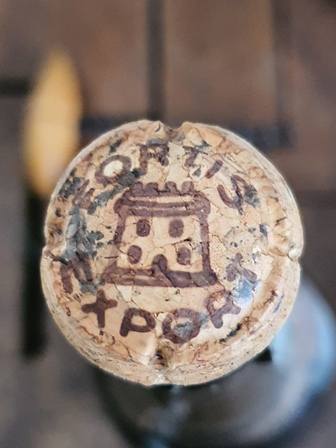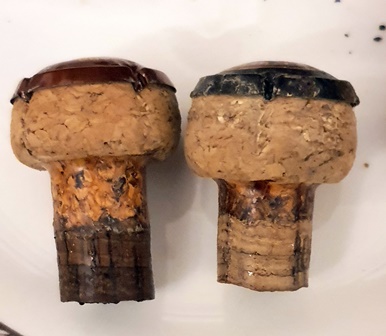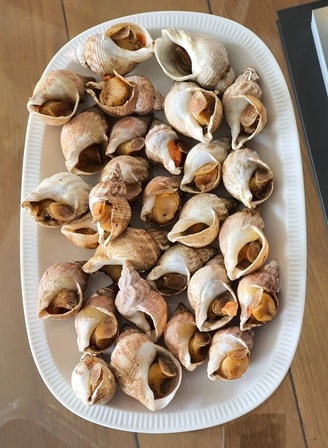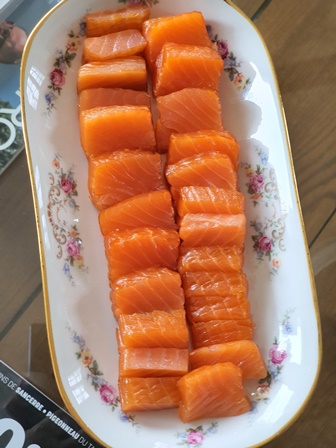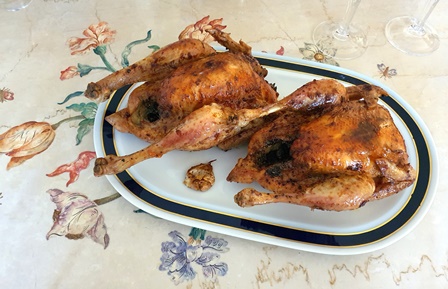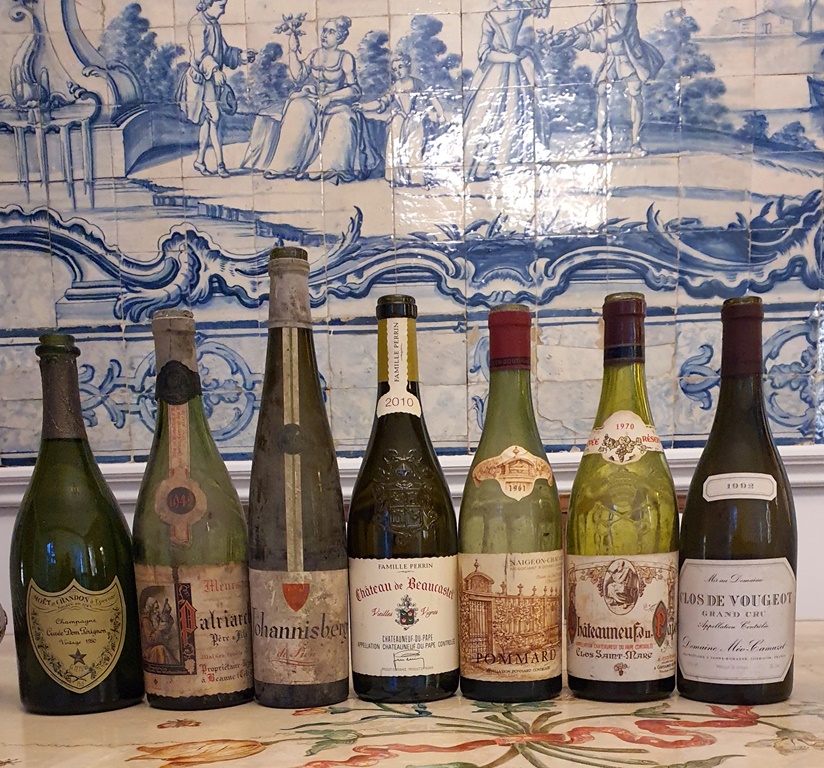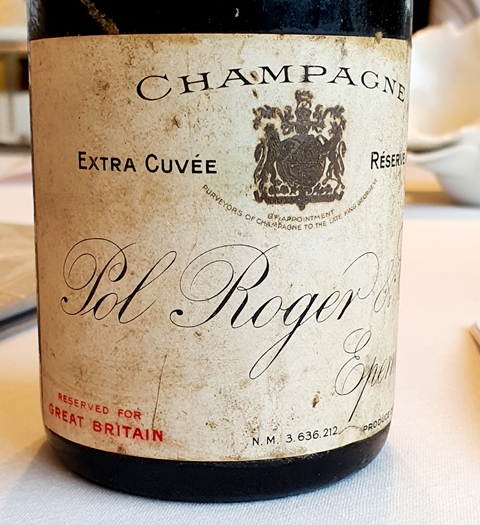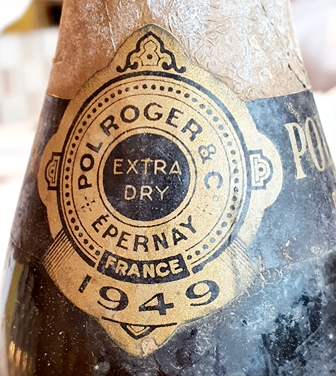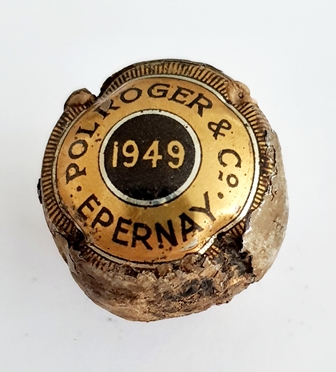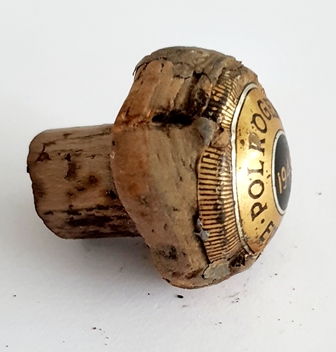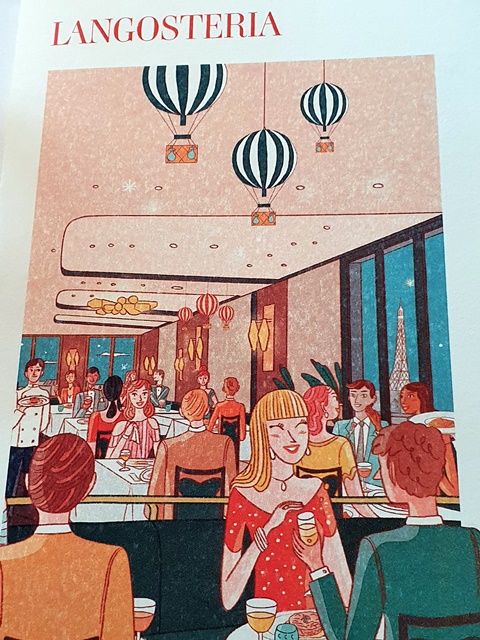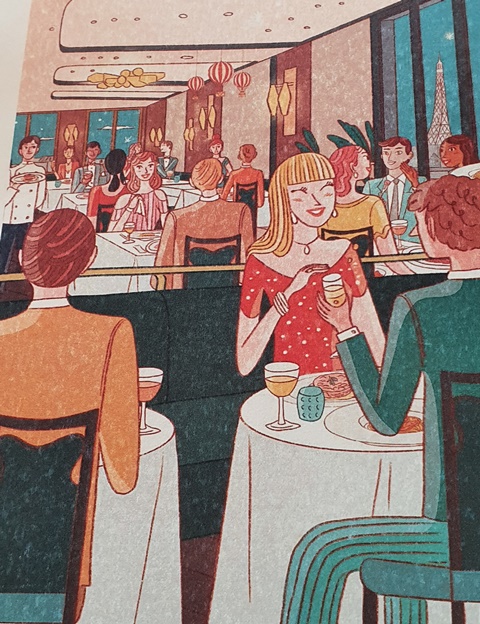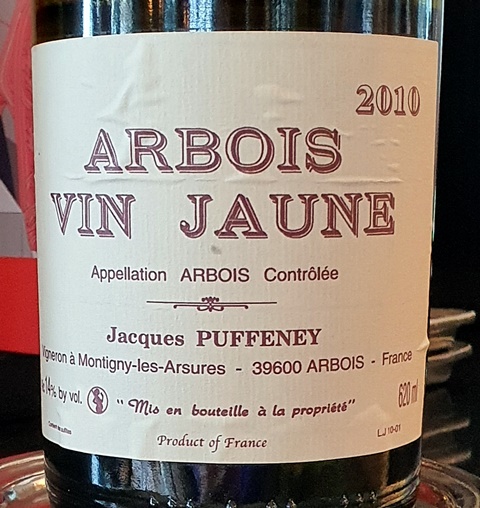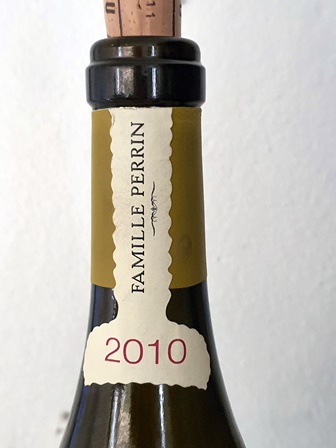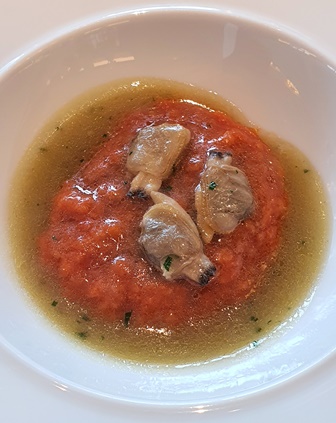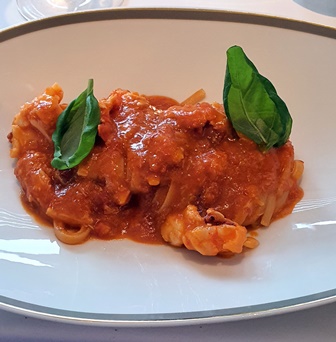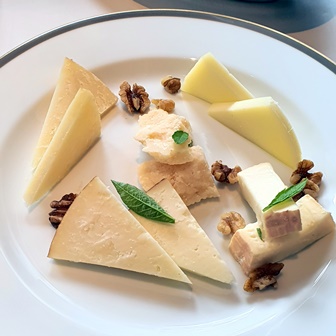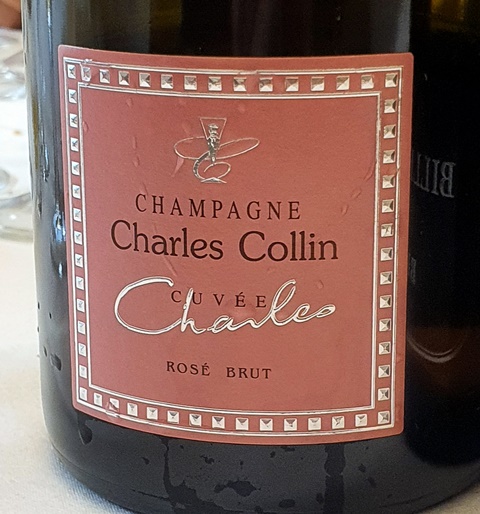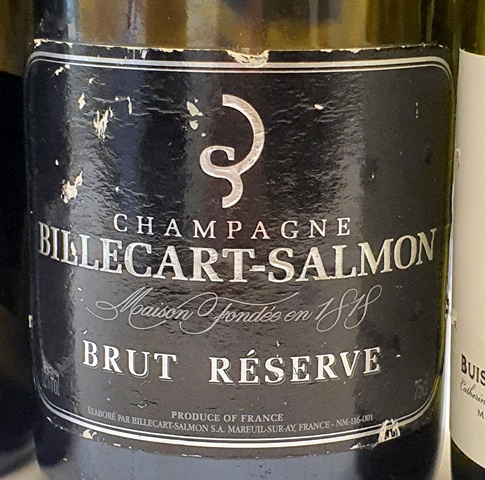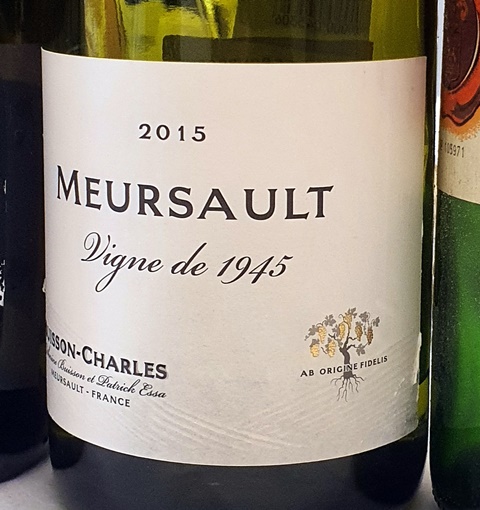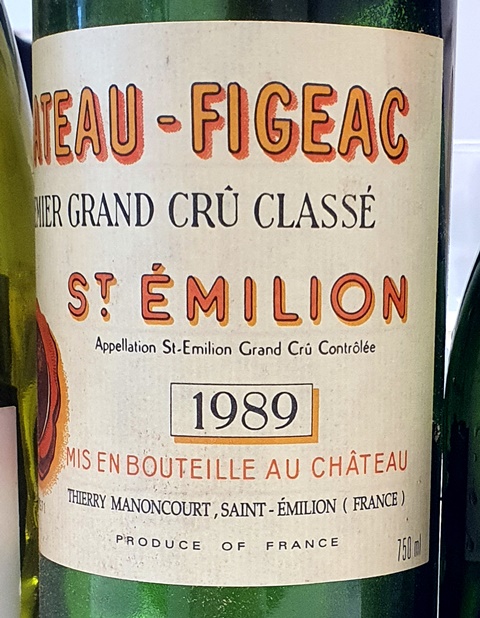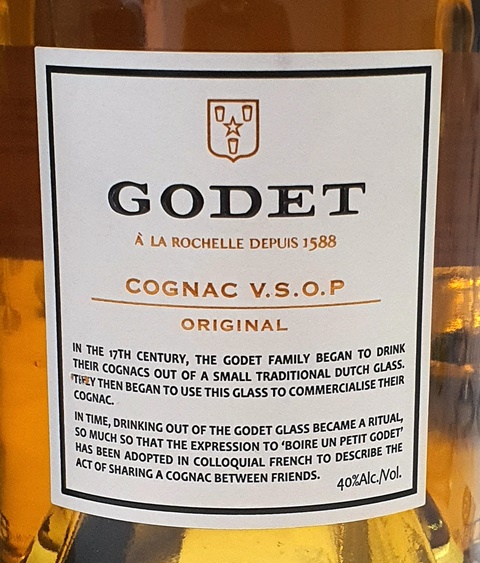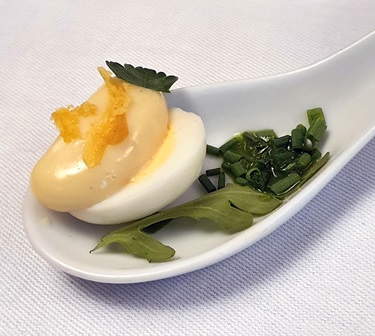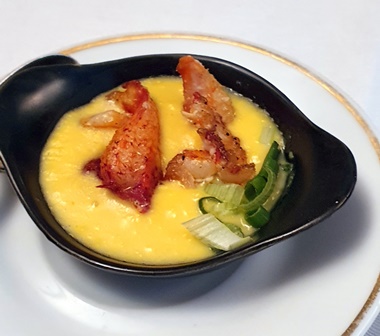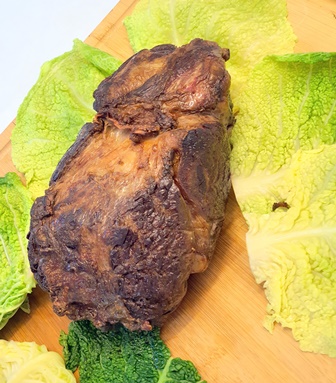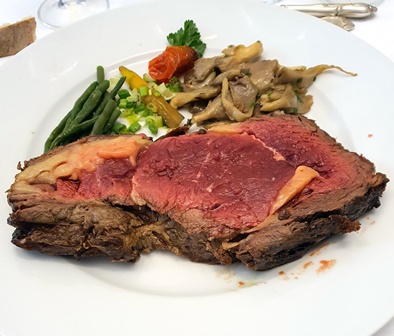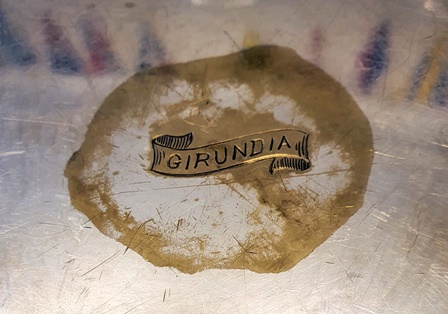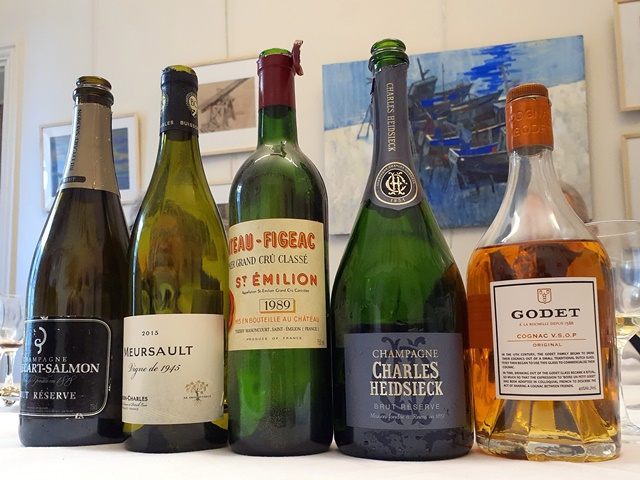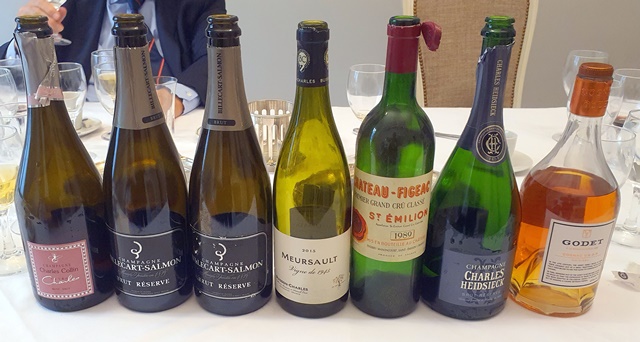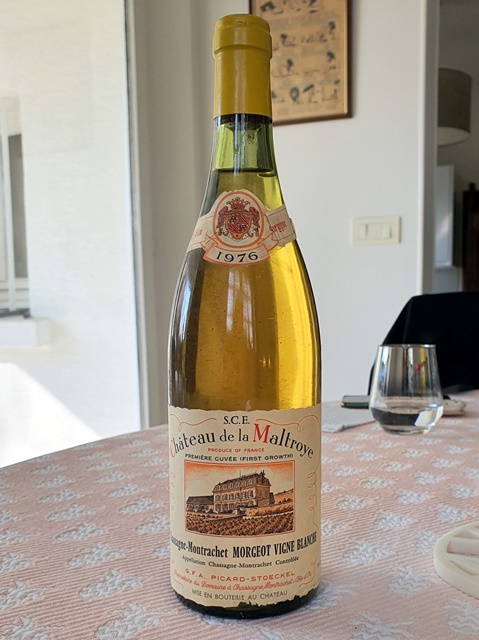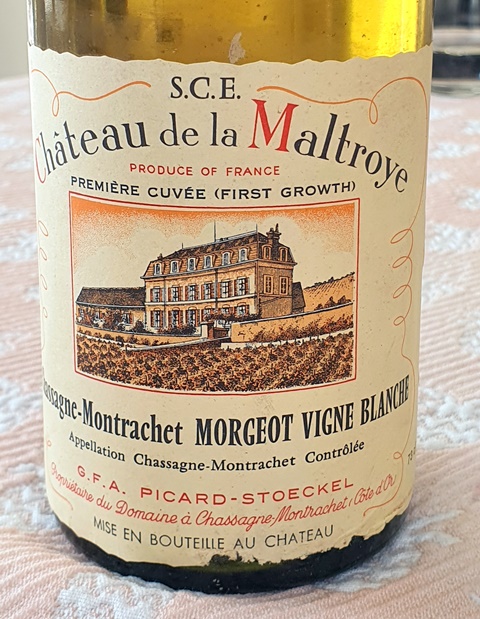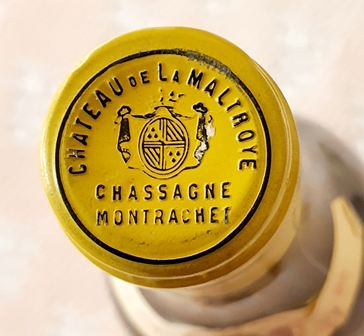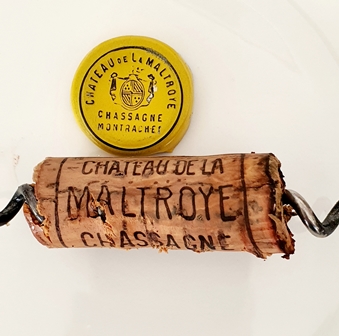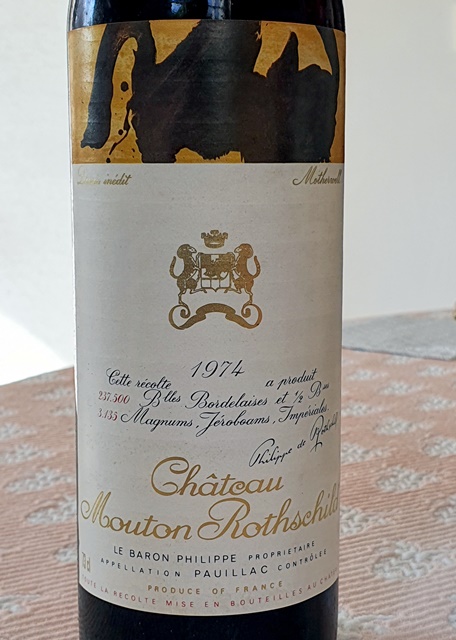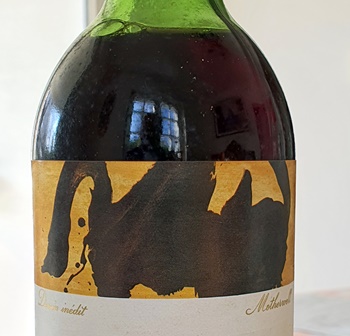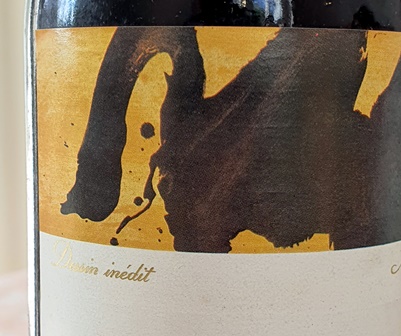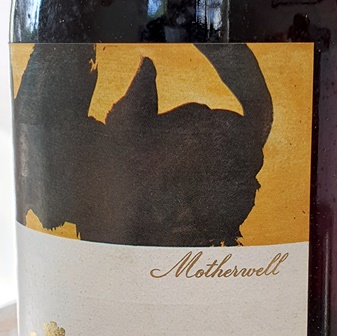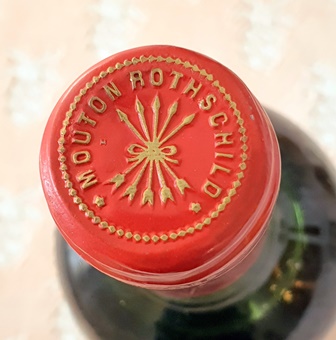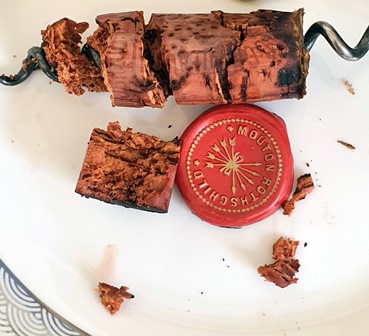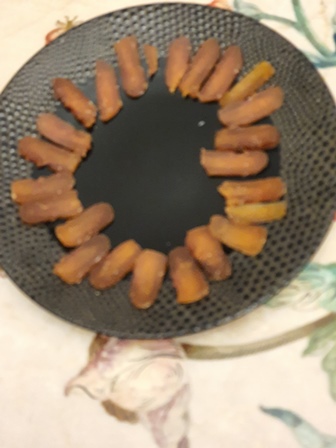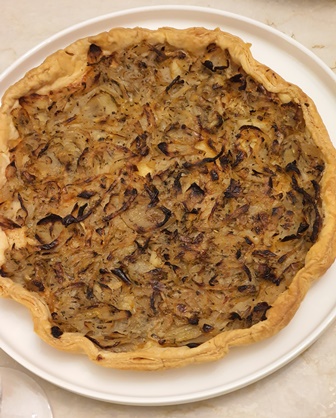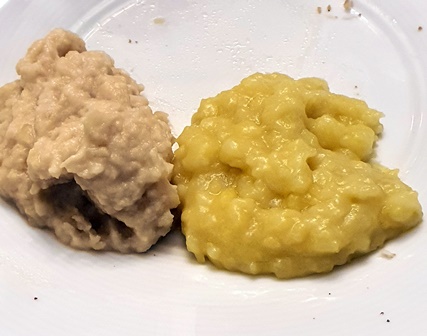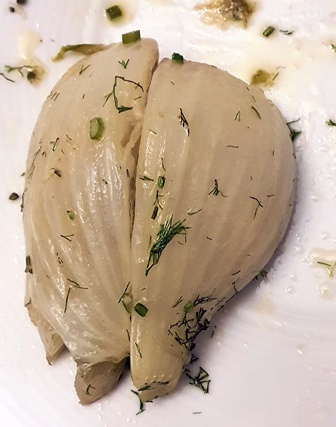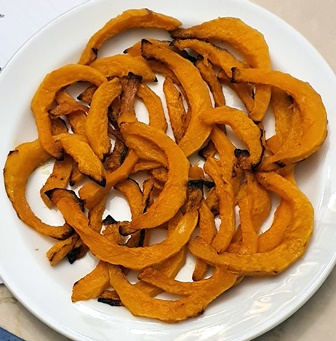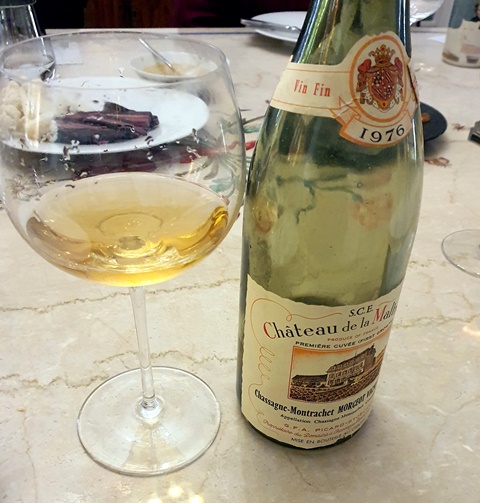The 261st meal of wine-dinners begins in a very curious way. The confinement or its consequences had slowed down the pace of meals so I wanted to create a dinner thinking of two loyal friends whose company I appreciate. I submit my project to them and one of them says to me: « for once we would like a meal where there would be only legendary wines, like the Hermitage La Chapelle 1961 ». I tell them that such a meal would lead us into an area of budgets that are difficult to access, but they encourage me to do a project.
When I expose it to them, they make me think of a sketch by Fernand Raynaud (a famous comic of the 60ies) where a naive man has been instructed to pass packets of sugar through customs (or at least designated as such). Arrested by customs officers, he calls his uncle on the phone and after having betrayed all their secrets, he says to him: « say, Uncle, why are you coughing ». Their reaction would have prompted me to say to them: « my friends why are you coughing », because they declined my offer as I suspected.
The project having been designed, I was not going to give it up and it was thanks to Instagram that I was able to put together an almost complete table since I was led to invite my two daughters so that we could be ten.
It seemed obvious to me that this meal had to be done with Arnaud Donckele talented chef. I had no idea while working with him on the menu, that he was going to go from three to six stars in the red guide. It was announced two days before our meal. The atmosphere on the day of the event was particularly cheerful.
I arrived at the Plénitude Arnaud Donckele restaurant at the Cheval Blanc Paris hotel at 9:30 a.m. to open the wines. The cork of the 1959 white Lafite has broken into several pieces and gives off a sublime fragrance. The cork of the Mouton 1945 very strongly stuck to the glass came off in lint. The scent is magical. The Lafite 1869 has a recent label and has no indication of the date of recorking. When I take out the cork, which is probably around fifty years old, I am reassured because it seems completely authentic to me. And the perfume of the wine is of a balance that strongly suggests a prephylloxera wine. I am happy.
The nose of the Romanée Conti 1999 has all the components of a great Romanée Conti but the wine is a little discreet. Next to it, the perfume of Echézeaux Henri Jayer 1990 in magnum has all the finesse I expected. It is of rare subtlety.
The flavors of the two Rhône wines are generous and brilliant. We will feast. The Yquem 1858 shows by the smell that it has eaten its sugar and it reminds me of the Filhot 1858 that I drank which also had eaten its sugar. We will therefore be in refined flavors that are more than conquering.
On the contrary, the Constantia « Red » with the cork that disintegrates is a bomb of fragrances. What power and what richness in this wine. The richest flavors are those of Constantia and Lafite white wine. The finest are those of Mouton 1945, La Chapelle 1961 and Ermitage Cuvée Cathelin 1991.
Finishing this crucial opening session, I can say that all the wines show what I expected and they promise the qualities I was hoping for. The two 1943 champagnes are opened at 11 a.m. and the young champagne is opened at 10 a.m.
The beautiful dining room on the first floor of La Samaritaine, offering a view of the Seine and the Pont Neuf is reserved for us. Special attention awaited us. When I had a dinner at the Yacht Club of Monaco, the restaurant had a table built according to my recommendations, elliptical in shape. The restaurant Plénitude had the same attention for this meal, to the point of calling this table my name. The facts will prove that this table is ideal.
I had thought that starting our meal with two champagnes from 1943 might not put them in an ideal situation so, without having announced it, I had a Champagne Salon 2006 served. One of the guests will say: if a Champagne Salon serves clear the mouth, we are in pure luxury. This 2006 pleases me with its width and balance. It is solid and will age well.
The menu created by Arnaud Donckele for the wines is worded as follows: Langoustine, artichoke, caviar, for Carnelian vinaigrette / Red mullet, Boulangère, crocus, for Sabayon Borgne / sweetbread, sweet onion, celery, for rogue jus / pigeon, giblets, herbettes, for delicate juice / satiny composition / rose financier.
We notice that each dish is presented in three words and that the dish only exists « for » the sauce. The chef is a sauce wizard and we are going to check it out.
We sit down to eat. We are ten. The only French people are my two daughters and a loyal guest. There is a Belgian, British by birth or at heart, Swiss and an American. The meal is held in English.
The appetizers are wonderful and especially the oysters which are probably the finest I have ever tasted. Champagne Dom Pérignon 1943 shows its age but also its very fine qualities. It has the charm and largeness of the great Dom Pérignons.
The Champagne Salon 1943 has the same panache as the Salon 1943 drunk at the Champagne Salon headquarters, which I consider to be my greatest Salon. We are here at the same level of perfection. The cork indicates that it is a recent disgorgement made at the estate. Its square, solid structure, made to stand the test of time, is impressive. Because of its greater freshness, I much prefer the Salon, and to my great surprise I hear three table neighbors to my right who prefer the Dom Pérignon. We will see in the votes that the balance weighed on their side. Amazing to me. Apart from these differences, they are two exceptional champagnes, noble and imposing.
On the divine langoustine (it rhymes), there are two whites that everything opposes. But what a brilliance. This is the first time I have drunk this extremely rare 1959 Lafite white wine. Its nose is rich and generous and on the palate it is incredibly seductive and even bewitching. I would gladly say that this white wine outclasses all the dry white wines of Bordeaux. Why was it abandoned, I don’t know, but what a pity. This wine is imperial.
Next to it, the Montrachet Domaine Leflaive 1996 is impressive in largeness and smoothness. It is rich but airy. My guests, some of whom had problems with Burgundy whites with disastrous corks, admired the perfect condition of this great wine and its breadth in the mouth.
Throughout the meal we will notice that in the pairs of wines associated with a dish, one wine is more welcoming to the meat and the other more welcoming to the sauce. Not having taken notes, I would not be able to restore it, which is a pity.
Arnaud Donckele, all smiles, comes to greet us and explains the interest he finds in cooking for rare and old wines and the pleasure of our exchanges. He even said at one point: « the chef is actually François Audouze ». It’s nice, but the immense chef is him, without further ado.
On the exceptional red mullet we taste two Bordeaux reds separated by 76 years. Château Lafite 1869 is solid and refined. It has the robust structure of pre-phylloxera wines and the truffle taste found in the great Lafites.
Next to it, Château Mouton-Rothschild 1945 lives up to its legend. This is the definition of the perfect Bordeaux where all the components of the tastes are assembled. It is one of the greatest wines in the world and this bottle is at the peak of its quality. These two Bordeaux wines are exceptionally expressive in their straightness. Two treasures.
Calf sweetbreads will rub shoulders with two exceptional wines. La Romanée Conti Domaine de la Romanée Conti 1999 has all the assets of a great Romanée Conti. Like the fanatic of legendary cars who knows how to recognize a McLaren from a kilometer away solely by the sound of the engine, I know how to decipher the subtleties of this wine in an exceptional vintage. But he is still too young for my taste and a little too discreet. It is big, but it will be so much bigger in twenty years that my pleasure is a little diminished.
Before the meal, I thought that the wine that would impress me the most would be the Echézeaux Henri Jayer Magnum 1990, an extremely rare bottle. On the nose, I am satisfied, because all the finesse is there. On the palate, I am also overwhelmed by its refined expression. But I made a mistake. I usually like to drink Romanée Conti wines with a simple poached foie gras. For this meal, I suggested a sweetbread and I think my suggestion was not accurate, although the dish is remarkable, because there was more power in the dish than the two lovely wines could support. This does not detract from the qualities of these two legendary wines.
The pigeon is a marvel. During my long trip in the world of wine, the Hermitage La Chapelle Paul Jaboulet Aîné 1961 seemed to me to be the greatest and most moving red wine. And yet the competition is fierce. I find in this bottle today the same reasons to place it in the firmament. It has it all, generosity, openness, readability, assurance, and an insistent charm. It’s a marvel of balance. He will be my winner.
The Ermitage Cuvée Cathelin Chave 1991 is for me the greatest vintage of this wine. What youth, what nobility, what enjoyment. A pure marvel of gourmet youth. There, everything comes together for perfect happiness, pigeon and these two Hermitages. A great moment of emotion.
Château d’Yquem 1858 has a beautiful amber color but with rays of sunshine. The satiny composition of the pastry chef is a total success with a perfect dosage of acidity. This Yquem has eaten its sugar, which means that it is drier than it should be. It lacks the intoxicating opulence of the great Yquems. I am lucky enough to accept dry Sauternes in which I find other subtleties, but I also understand that one may regret the lack of breadth.
The Great Constantia Red J.P. Cloete South Africa circa 1860 has a pretty amazing old copper color that shines in the sun. The nose is invasive, lush. In the mouth we have all the most seductive flavors of the world. Dense, rich, complex, this wine is on another taste planet.
There are so many extraordinary wines that ranking them is almost impossible. As far as I’m concerned, I don’t think I would do the same ranking if I was asked to do it again an hour later. The 2006 Salon is not included in the voting field. All wines had at least one vote. The wine that received the most votes was Vin Blanc de Lafite 1959. What a nice surprise.
Five wines were named first which is a great result, the Hermitage la Chapelle three times, like the Hermitage Cathelin. The Mouton 1945 was named first twice. The Echézeaux Henri Jayer and the Dom Pérignon were voted first once each.
The consensus vote is: 1 – Ermitage Cuvée Cathelin Chave 1991, 2 – Hermitage La Chapelle Paul Jaboulet Aîné 1961, 3 – Lafite white wine 1959, 4 – Château Mouton-Rothschild 1945, 5 – Echézeaux Henri Jayer Magnum 1990, 6 – Champagne Dom Perignon 1943.
My vote is: 1 – Hermitage La Chapelle Paul Jaboulet Aîné 1961, 2 – Château Mouton-Rothschild 1945, 3 – Ermitage Cuvée Cathelin Chave 1991, 4 – Lafite white wine 1959, 5 – Great Constantia Red J.P. Cloete South Africa circa 1860.
The dishes were presented in English and French in a very elegant way. The food service is perfect. The wine service by Emmanuel was also perfect and intelligent. Instead of going to the smoking room, we went up to the seventh floor to smoke the cigars that I had brought and taste the Nady Martinique Rum that I had also brought. At one moment I realized that I was the only one to smoke which is a paradox because I quit smoking for 31 years. Funny. But at least we had the excuse to continue talking about this unforgettable meal. Arnaud Donckele’s cuisine is extremely sensitive and talented and my wines have shown themselves to be at the top of their art, whatever their age.
I was called upon to organize an extraordinary meal. It was above all my expectations. It is the greatest of the 261 meals I have had the honor of organizing. It’s unforgettable.
A friend of mine reading my report told me: against all prognostics and against nature Rafael Nadal won the Melbourne Open. Make better than this meal would be impossible. Would you accept the challenge to do better? Practicing Britannic understatement I would say: interesting question.
(the photos of this lunch can be seen in the next article in French)

